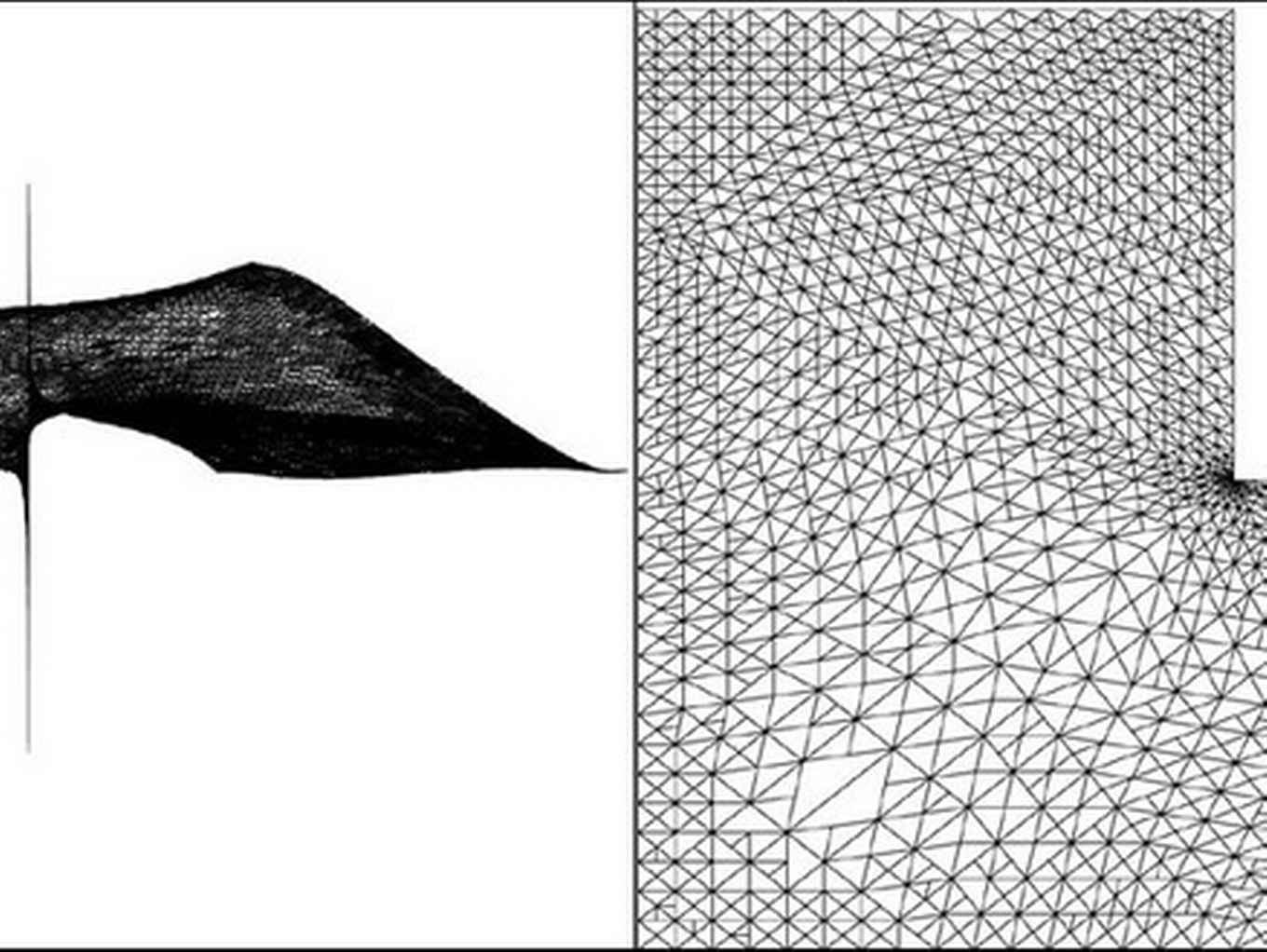Focus on research: Professor of numerical mathematics Rob Stevenson

Foto: Bob Bronshoff
Why is it so difficult to predict the weather? This is partly due to the limited precision of the measurements but also because, when modelling weather phenomena, use is made of complicated equations which cannot be solved exactly. The branch of science involved in trying to calculate such equations is called numerical mathematics. Since September 1st, Rob Stevenson has been head of the UvA research group that concentrates on this particular form of mathematics.
More specifically, Stevenson works on partial differential equations, which are formulated in terms of derivatives of an unknown function with two or more variables. Stevenson: ‘As soon as you start modelling in science or technology, you end up using this type of equation. The weather is a well-known example, but think also of problems encountered when designing a car. You want the car's air resistance to be as low as possible. In the past experiments were carried out in wind tunnels, nowadays we can model air resistance using partial differential equations.'
Estimation
As mentioned above, it is often not possible to solve partial differential equations exactly. But we can attempt to estimate the solution as best as we can by means of a specially designed algorithm. Stevenson: ‘The classical approach is to convert the equation into a discrete problem by creating a finite system of equations that can be solved. A system like this contains N equations, whereby N is usually a large number, e.g. a million or a billion. The big question then is how to solve this system quickly, since you don't want a computer to take more than a day to predict tomorrow's weather. The way in which the method scales the computing time with N is essential here. If e.g. N squared is used, then solving a problem twice as large will take four times as much computing time.'
Recently Stevenson dealt with the so-called multi-grid method, which has the unique quality that the computing time is proportional to N, so that the complexity of this method is optimal. Stevenson: ‘Some people think that the fast developments in computer hardware mean that it is less important to develop faster numerical methods. However, this is a misconception. If you have a bigger computer, you want to be able to solve larger problems and, given that the difference between e.g. N squared and N increases quickly with increasing N, the use of optimal algorithms becomes even mort important.'

Adaptive grids
Foto: Bob Bronshoff
At present, Stevenson is focusing particularly on the process how to convert a partial differential equation into a discrete problem. He does this by means of so-called adaptive methods, whereby he aims at optimal complexity. Stevenson: ‘For a given problem, you want to find a calculation within a certain tolerance. In the case of temperature, for example, you are looking for a calculation that is accurate to within a hundredth of a degree. The more exact the calculation is required to be, the more subtle the discretization of the equation also needs to be.
To illustrate the idea of an adaptive method, Stevenson takes pen and paper and sketches two diagrams. In the first he draws a neat, sinus-like function. When solving a differential equation you don't know the function that this line describes, but only a certain linear combination of derivatives of this function. Stevenson explains that, in order to calculate the function as well as possible, you can, as it were, place a grid on top of the line and choose the best estimate for each point. He shows this by drawing dots on the X-axis of the diagram. In the second diagram he draws a line that starts off making strange, complicated twists and turns, after which the twisting subsides and the line carries straight on with hardly any deviations. Stevenson: ‘If you place the same type of grid on this line as on that in the first diagram, you will, by interpolation, get a good calculation of the function in the straight section of the line, but in the section where it makes those strange twists you will get considerable errors. You can then keep refining your grid in these places as long as is necessary.'
A practical example of such an adaptive calculation is shown above. The figure on the left shows the numerical calculation of a Navier-Stokes equation. This is a partial differential equation which describes the flow and turbulence of e.g. air or water around an object. The diagram shows the air pressure in a two-dimensional, L-shaped space. The figure on the right shows the grid used to achieve the approximation on the left.
Wavelets

Within his research on adaptive methods, Stevenson spends half of hit time on the adaptive finite-element method. Stevenson: ‘This is a well-known, classical method which gives a few million hits when Googled.' He spends the rest of his time on wavelet methods. The idea behind a wavelet transformation is relatively new and forms an alternative for the more familiar Fourier transformation. Roughly speaking, this means that a function with only local strong oscillation can, using wavelets, be calculated more efficiently than with a linear combination of sinuses and co sinuses, such as used in the Fourier method. Stevenson: ‘Wavelets are applied mainly in signal compression. Pictures on the Internet are compressed, often in JPEG format. The most recent version, JEPG2000, is based on wavelets. Given the same amount of data, this technique produces better pictures than older techniques that make use of Fourier transformations. The advantage of using wavelets to calculate differential equations is that the system of equations obtained after discretization is well conditioned. That means that the system is relatively easy to solve.'
Numerical mathematics is a branch of applied mathematics, but despite the examples relating to the weather and air-resistance of cars, Stevenson doesn't work on this type of tangible problem. Stevenson: ‘I work more on the theoretical side of numerical mathematics - perhaps it is better to define it as approximation theory. I like investigating things precisely and proving them mathematically, and problems from the real world are often too complicated for that. The ‘academic' problems on which I work do, however, model relevant aspects of such problems. An example of the type of problem that is currently of great interest are equations concerning high-dimensional spaces.
Stevenson often works on calculation methods designed by others, without knowing why these methods work and even whether they always work. Stevenson: ‘The best thing, of course, is to invent a new method yourself. Together with a PhD student, I recently developed a method for solving partial differential equations in high dimensional spaces, whereby the complexity of the calculation method wasn't dependent on the dimension.' Stevenson is silent for a moment in answer to the question whether he can tell us more about the method. ‘Well, not really. As soon as you go into this type of thing in more detail it all becomes very specialistic. I held a lecture here recently for colleague mathematicians. Even then I had to rack my brains how to explain everything clearly!
Published by Faculty of Science